Metorchis conjunctus
Adults of the trematode Metorchis conjunctus live in the biliary system of domestic dogs and free-ranging fish-eating mammals in North America.
Summary
Adults of the trematode Metorchis conjunctus live in the biliary system of domestic dogs (and possibly cats), and free-ranging fish-eating mammals serving as definitive hosts in North America. The life cycle is indirect and requires a freshwater snail first intermediate host and fish second intermediate host. Dogs, and rarely people, acquire M. conjunctus by eating metacercaria in undercooked sucker fish (catostomids) . Infections in dogs are usually asymptomatic, and are rarely associated with clinically significant liver pathology. Diagnosis is generally incidental, on detection of characteristic eggs in feces, which are dark brown and operculate with a distinct lip. Treatment involves off-label praziquantel and control depends on preventing dogs from consuming suckerfish.
Taxonomy
Phylum: Platyhelminthes
Subphylum: Trematoda
Class: Digenea
Order: Opisthorchiida
Family: Opisthorchiidae
Metorchis is the only genus within the Family Opisthorchiidae that is known to be important in animal and human health in Canada. In common with other digenean flukes, Metorchis has an indirect life cycle involving a molluscan first and freshwater fish second intermediate host. Metorchis conjunctus, probably the major species in Canada, is closely related to several other species of liver fluke including M. bilis and Opisthorchis felineus, which occur in domestic dogs and cats in Europe and Asia.
Note: Our understanding of the taxonomy of parasites is constantly evolving. The taxonomy described in wcvmlearnaboutparasites is based on Deplazes et al. eds. Parasitology in Veterinary Medicine, Wageningen Academic Publishers, 2016.
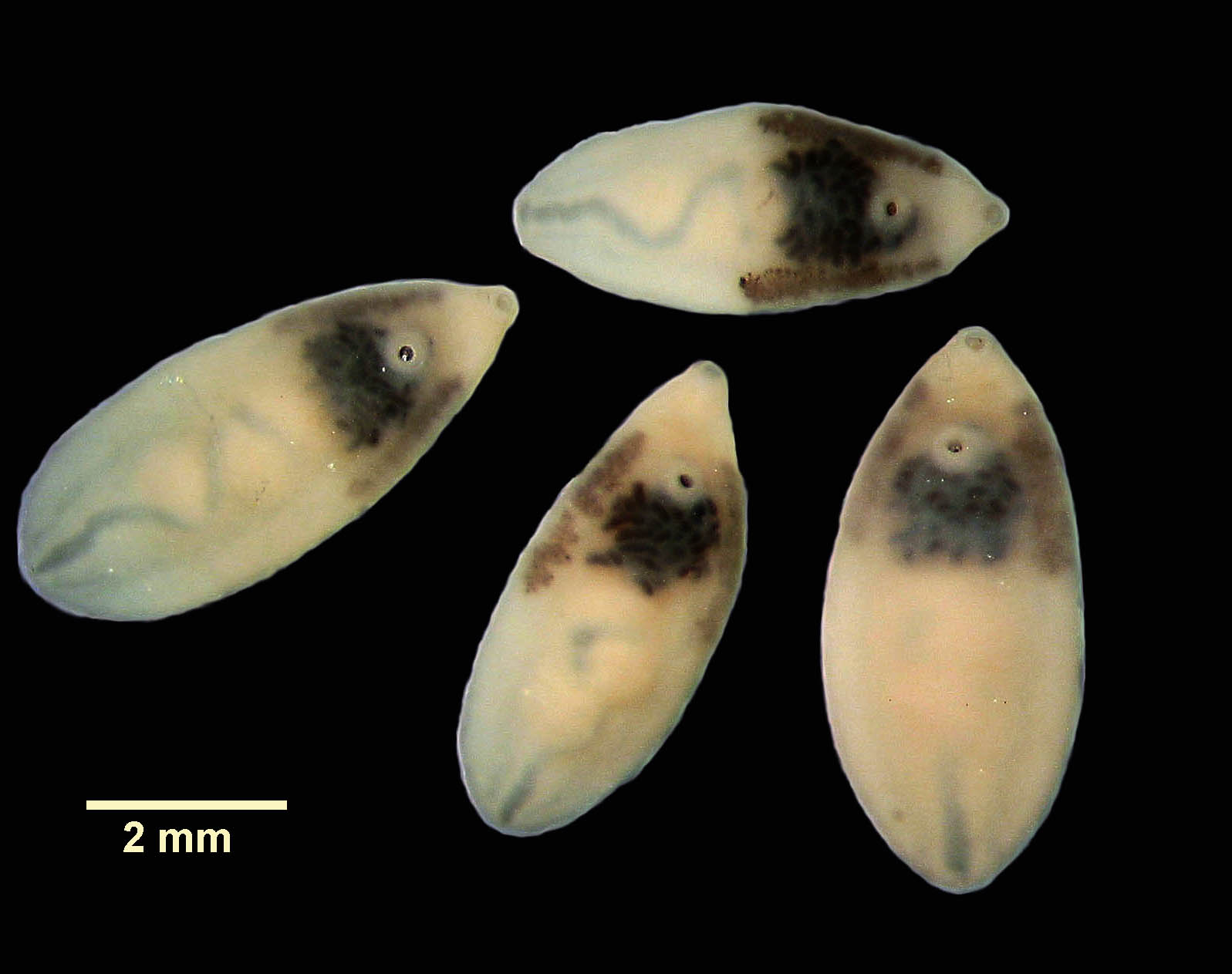
Morphology
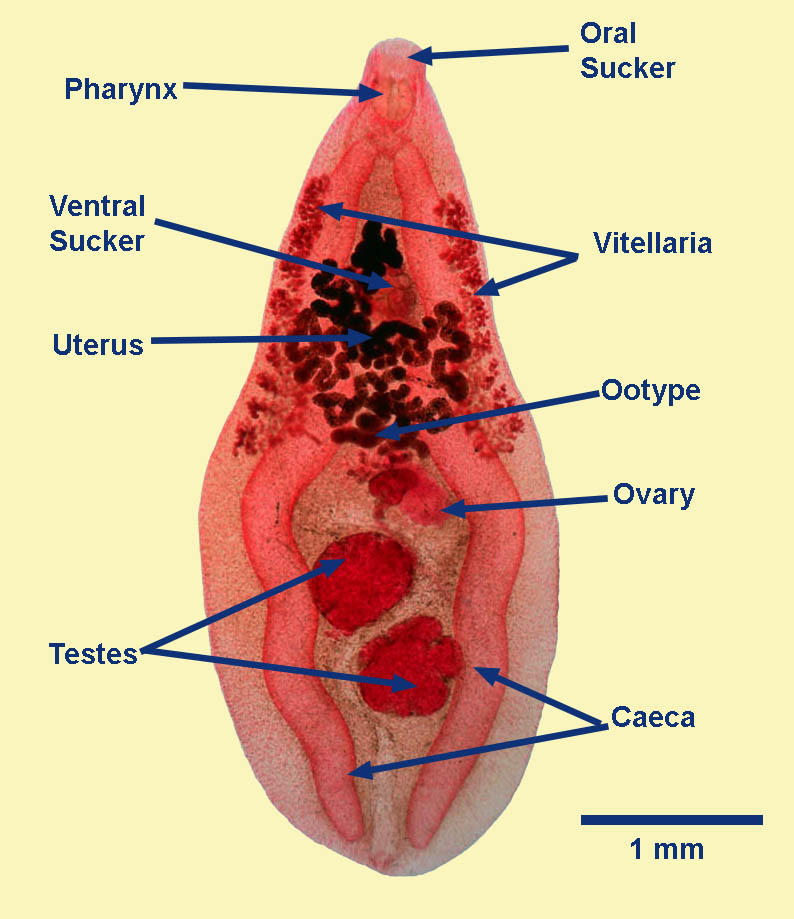
The eggs of M. conjunctus measure approximately 20 to 30 µm by 10 to 20 µm, have a thin smooth shell and an operculum. Around the edge of the operculum and the adjacent shell is a characteristic lip, which makes differentiating the eggs from those of other flukes of dogs and those of Diphyllobothrium relatively easy. Little internal detail is visible in the eggs recovered from fecal flotations.
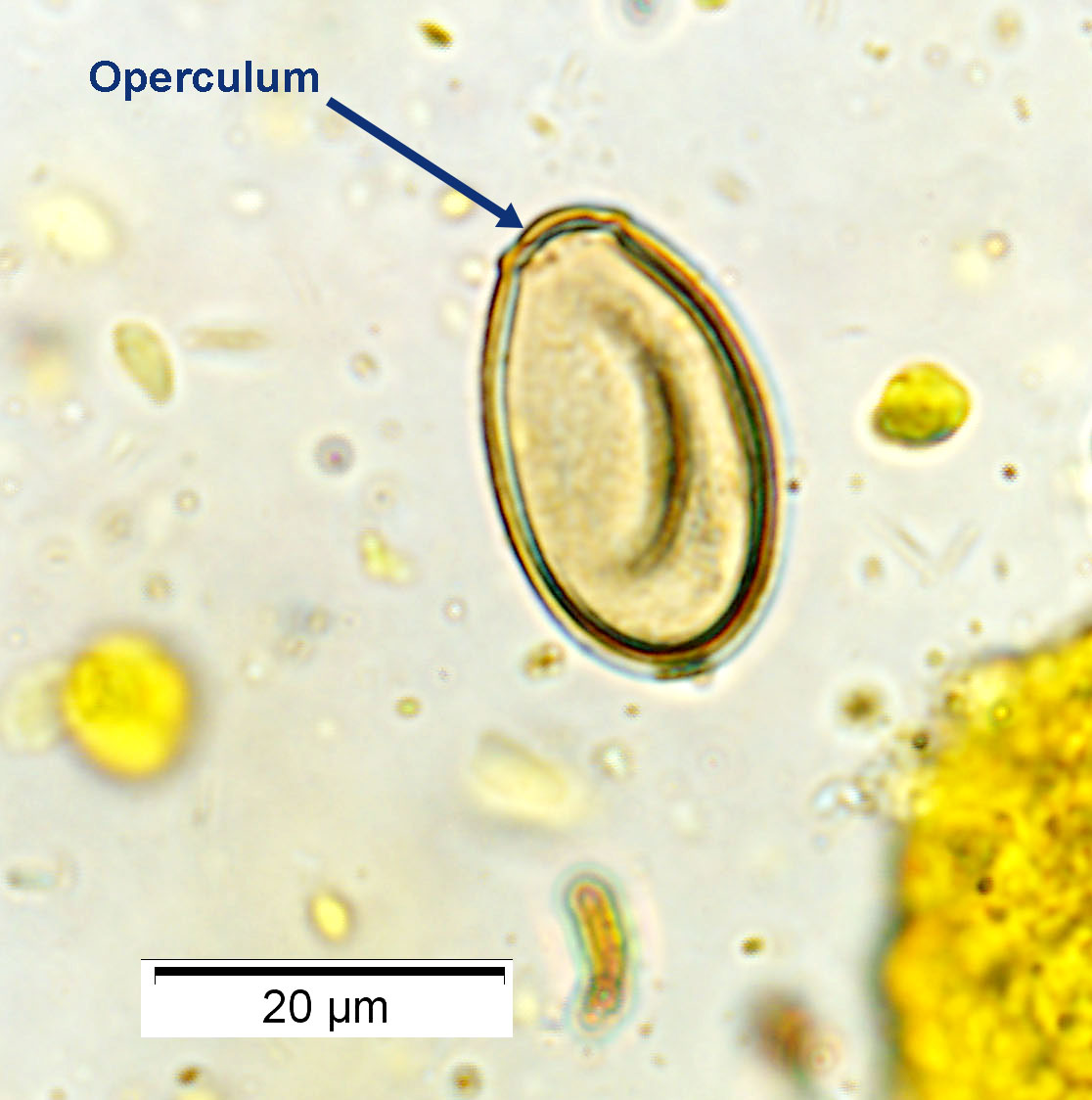
Host range and geographic distribution
Metorchis conjunctus occurs in fish-eating mammals, including dogs, cats, people, wild canids and mustelids in northern regions of North America. In Canada, the parasite is seen most often as an occasional parasite of dogs in the north.
Life cycle - indirect
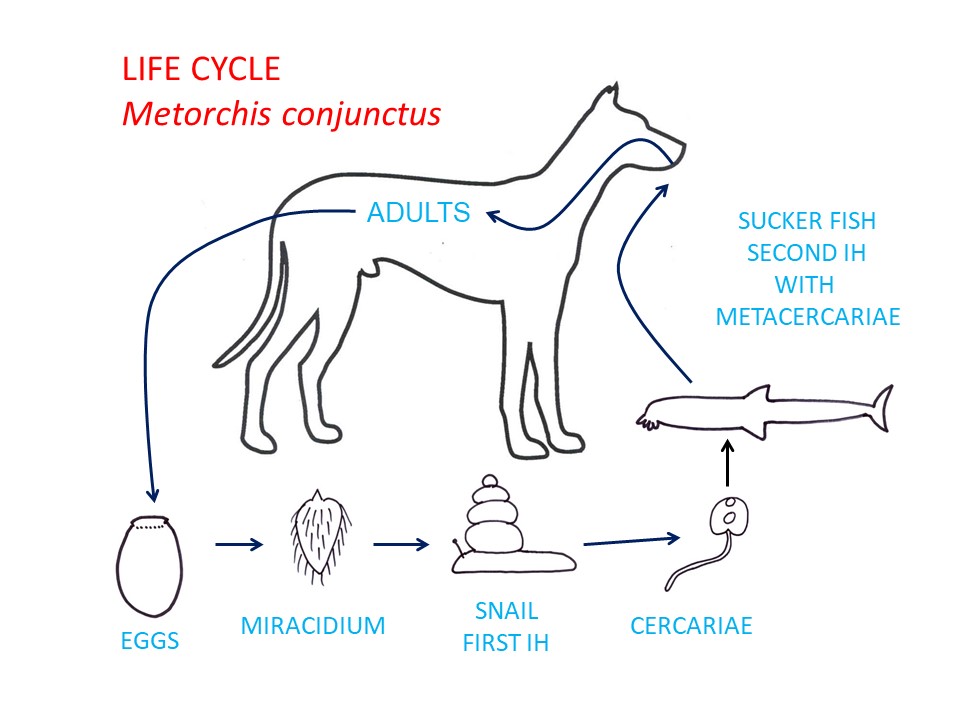
Adult M. conjunctus are located in the biliary system of the definitive host and, like most other flukes, are hermaphrodite. Eggs are shed in the feces. In an aquatic environment, a miracidium (first larval stage) develops within each egg and, following opening of the operculum, is released into the water.
For the life cycle to continue, the miracidium must invade or be ingested by a suitable snail first intermediate host, in which a sporocyst develops. Several rediae develop within each sporocyst, which then bursts, releasing them into the tissues of the snail. Subsequently, several cercariae develop within each redia, which bursts, releasing the cercariae. The cercariae leave the snail and must penetrate the skin of a sucker fish second intermediate host and develop to metacercariae (the infective larval stage), primarily in the skeletal muscles. Thus Metorchis, like other flukes, can increase its numbers in both the definitive and intermediate hosts.
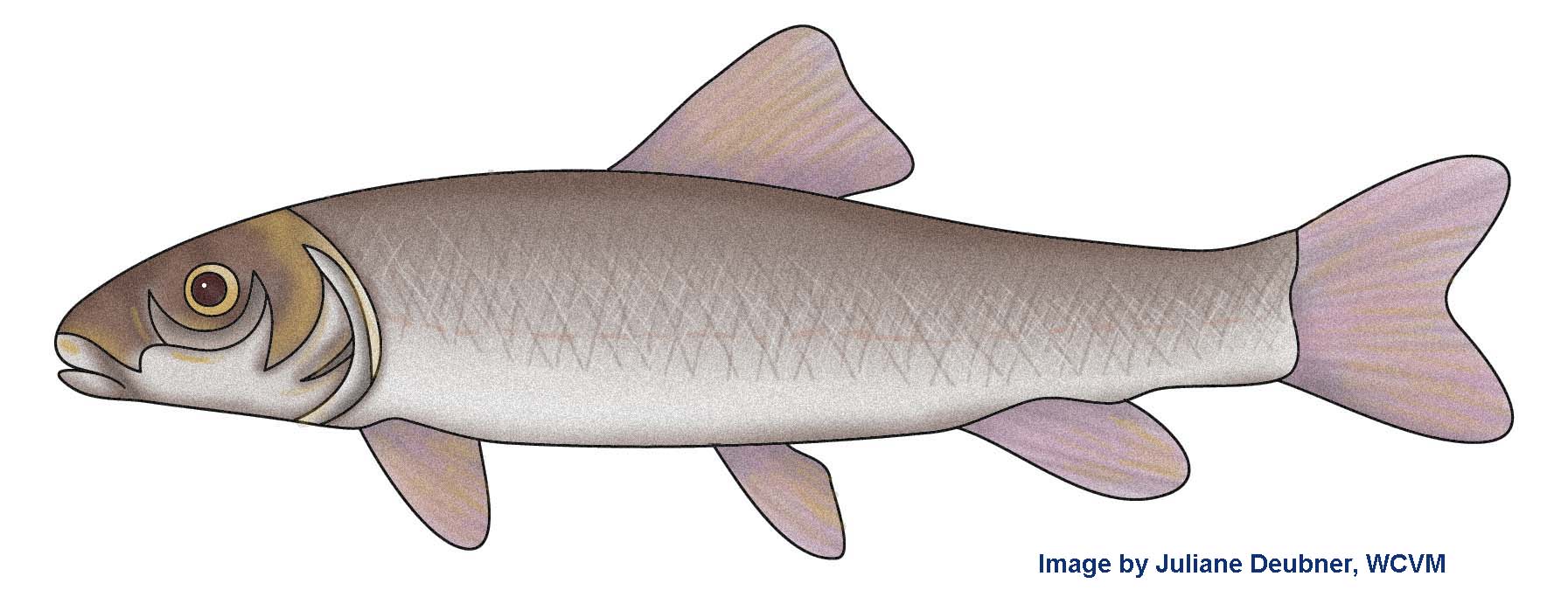
Infection of the piscivore definitive host follows ingestion of an infected fish. Following ingestion, the metacercariae move from the intestine into the biliary system and complete development to adults.
Epidemiology
Transmission of M. conjunctus requires sympatric definitive and intermediate hosts, and consumption of fish second intermediate hosts (sucker fish) by the definitive hosts. The geographic distribution of this parasite is patchy, and not well characterized in North America. Like other flukes, M. conjunctus is not dependent solely on sexual reproduction in the definitive host to increase its numbers; it also reproduces asexually in the snail first intermediate host. Additionally, although the miracidia that hatch from the eggs are relatively fragile and short-lived, the metacercariae in the fish can survive and remain infective for the lifespan of the fish.
Pathology and clinical signs
In general, Metorchis is not thought to be associated with adverse effects in its dog definitive hosts, although occasional clinically significant liver pathology has been reported.
Diagnosis
Typical Metorchis eggs in feces may be detected by centrifugation-flotation; however, trematode eggs are dense and may best be detected using sedimentation based methods. In a case of hepatic abscesses, eggs were recovered on cytology of aspirated contents.
Treatment and control
There are no drugs approved in Canada for Metorchis spp. in dogs. While treatment is not usually considered necessary, praziquantel at high doses (20 mg/kg) may inactivate adult flukes. This is an extralabel use. In a case of hepatic abscesses secondary to fluke infection, abscesses were drained percutaneously, injected with alcohol, and the dog was successfuly treated with high doses of praziquantel.
Control of M. conjunctus depends on preventing the feeding of raw or inadequately prepared sucker fish (and other freshwater fish) to dogs and cats. Solidly freezing or cooking fish will inactivate metacercariae. Keeping dogs from defecating near water bodies prevents the eggs in the feces from reaching an aquatic environment containing the snail intermediate hosts.
Public health significance
Metorchis can infect people, usually as a result of eating metacercariae in inadequately cooked or frozen sucker fish (e.g. as sushi or sashimi), and can produce clinical signs which most often affect the liver.
In the past M. conjunctus was an occasional parasite of inhabitants of northern Canada, but now seems to be less common, perhaps because fewer sucker fish are consumed. In 1993, however, there was a small, common-source outbreak with clinical signs in people in Montreal, Quebec associated with sucker fish sashimi.
References
MacLean JD et al. (1996) Common-source outbreak of acute infection due to the North American liver fluke Metorchis conjunctus. Lancet 347: 154-158.
Lemetayer, J. D., Snead, E. C., Starrak, G. S., & Wagner, B. A. (2016). Multiple liver abscesses in a dog secondary to the liver fluke Metorchis conjunctus treated by percutaneous transhepatic drainage and alcoholization. Canadian Veterinary Journal 57(6), 605–609. https://www.ncbi.nlm.nih.gov/pmc/articles/pmc4866664/

